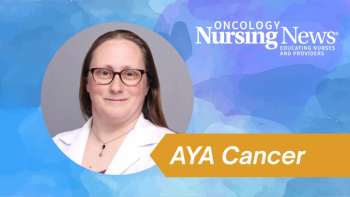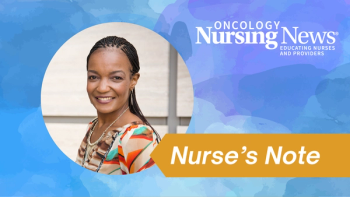
- October 2019
- Volume 13
- Issue 8
Providing Essential Education and Support for Parents of Pediatric Patients
Oncology nurses are a key part of the cancer care team, but they are also a crucial source of information for a patient's family.
Parents often become distressed or overwhelmed when their child receives a cancer diagnosis, especially if the prognosis is poor. Nurses must be sensitive to parents’ emotional needs when providing important information about the disease and safely caring for the child at home, and a number of strategies can help guide their interactions with parents.
In 2019, more than 11,000 children will be given a cancer diagnosis, and almost 1200 children are expected to die from the disease.1 Behind accidents, cancer is the second-leading cause of death for children aged 1 to 14 years, according to the American Cancer Society. But thanks to advances in cancer research and treatment, the survival rate for children has increased over the past 4 decades from 58% to more than 80%. The Children’s Oncology Group (COG) has played a pivotal role in improving outcomes for pediatric cancer through clinical trials, research, and education.2
Wendy Landier, PhD, RN, CRNP, FAAN, an associate professor in the Division of Pediatric Hematology-Oncology and the School of Nursing at the University of Alabama at Birmingham, chairs the COG Nursing Discipline Committee and spoke to Oncology Nursing News® about a structured interventional approach to optimize parent and family education and increase nurses’ satisfaction.
The intervention, which a COG workgroup developed to educate parents after their child receives a diagnosis, follows an 18-item checklist to ensure essential information is taught prior to hospital discharge.3 This checklist addresses topics including diagnosis/treatment, access to care, treatment of adverse events, infection prevention, care of the child, and home medications. Some areas, such as handwashing and taking temperature, require return demonstration.
Education must be patient/family-centered, focused on essential information first, consistent, repeated, structured, paced, and delivered according to the family’s preferred style of learning.
“Early on,” Landier says, “parents tend to be anxious about the logistics of life following diagnosis. They want to know how they’ll handle working, telling the other children, paying the bills, and managing the appointments.” The impact of hearing their child has cancer makes retention of information difficult at this stage.4
Posting the COG checklist in the child’s hospital room allows nurses to know at a glance what areas have been taught and to whom, how, and when they were addressed, as well as whether a topic’s final checkoff is complete. This provides transparency, with a list that is easy to use, accessible, and empowering for nurses, as they are always aware of what areas still need to be addressed. The checklist, along with the parent guide and handbook, is available through the COG.
“Nurses are pivotal when it comes to helping families cope,” Landier stated. “They bridge the gaps by providing essential education on complex information in a way the family can best understand. It means so much to families when nurses take the time to translate medical language for them and meet them where they are.”
One of the best ways nurses can build a trusting relationship with parents is to hold space for them to feel how they feel. If they are angry or sad, hold space for that. Amy Haskamp, MSN, RN, PCNS-BC, CHPPN, CPON, clinical nurse specialist for the Pediatric Palliative Care Team at Riley Hospital for Children in Indianapolis, Indiana, and a pediatric faculty member of the End-of-Life Nursing Education Consortium, encourages nurses to align their conversations with parents’ hopes. This is particularly important when a child’s prognosis is poor.
“If the family says they just want their child to stay alive, responding with ‘I will hope for that too’ helps bridge the divide between what parents wish and what nurses know,” Haskamp told Oncology Nursing News®. She also encourages nurses to use the NURSES mnemonic, which represents “name (the emotion), understand, respect, support, explore, and silence.”
“Communicating with parents about their child’s cancer is not about explaining everything out. It’s about a family who’s experiencing an emotion. Giving more cognitive information is not going to be helpful until emotions are addressed,” Haskamp said.
Haskamp added that acknowledging what parents are experiencing helps them feel supported and respected, which in turn helps them cope with their emotions. “They want to be heard,” she said.
Nurses should tailor conversations with parents to the situation and the family’s communication preferences. If the child has always been involved in conversations about their cancer, abruptly changing this pattern may lead to worry about what is wrong.
Sometimes the family may want help talking to the child. Guiding the conversation by asking and exploring questions often opens the door to deeper communication. Haskamp said nurses must never undersell their role: “They are more valuable than they can imagine.”
References
1. Key statistics for childhood cancers. American Cancer Society website.
2. Withycombe J, Alonzo T, Wilkins-Sanchez M, Hetherington M, Adamson P, Landier W. The Children’s Oncology Group: organization structure, membership, and institutional characteristics. J Pediatr Oncol Nurs. 2019;36(1):24-34. doi: 10.1177/1043454218810141.
3. Rodgers C, Bertini V, Conway MA, et al. A standardized education checklist for parents of children newly diagnosed with cancer: a report from the Children’s Oncology Group. J Pediatr Oncol Nurs. 2018;35(4):235-246. doi: 10.1177/1043454218764889.
4. Rodgers CC, Stegenga, K, Withycombe JS, Sachse K, Patterson Kelly K. Processing information after a child’s cancer diagnosis—how parents learn: a report from the Children’s Oncology Group. J Pediatr Oncol Nurs. 2016;33(6):447-459. doi: 10.1177/1043454216668825.
Articles in this issue
about 6 years ago
Putting Compassionate Care at the Forefront of Oncology Nursingabout 6 years ago
Protect Yourself and Your Patients From Fraud in Genetic Testingabout 6 years ago
Nurses Can Change The Direction of The Opioid Crisisabout 6 years ago
The Compassion Connection in Cancer CareNewsletter
Knowledge is power. Don’t miss the most recent breakthroughs in cancer care.
















































































